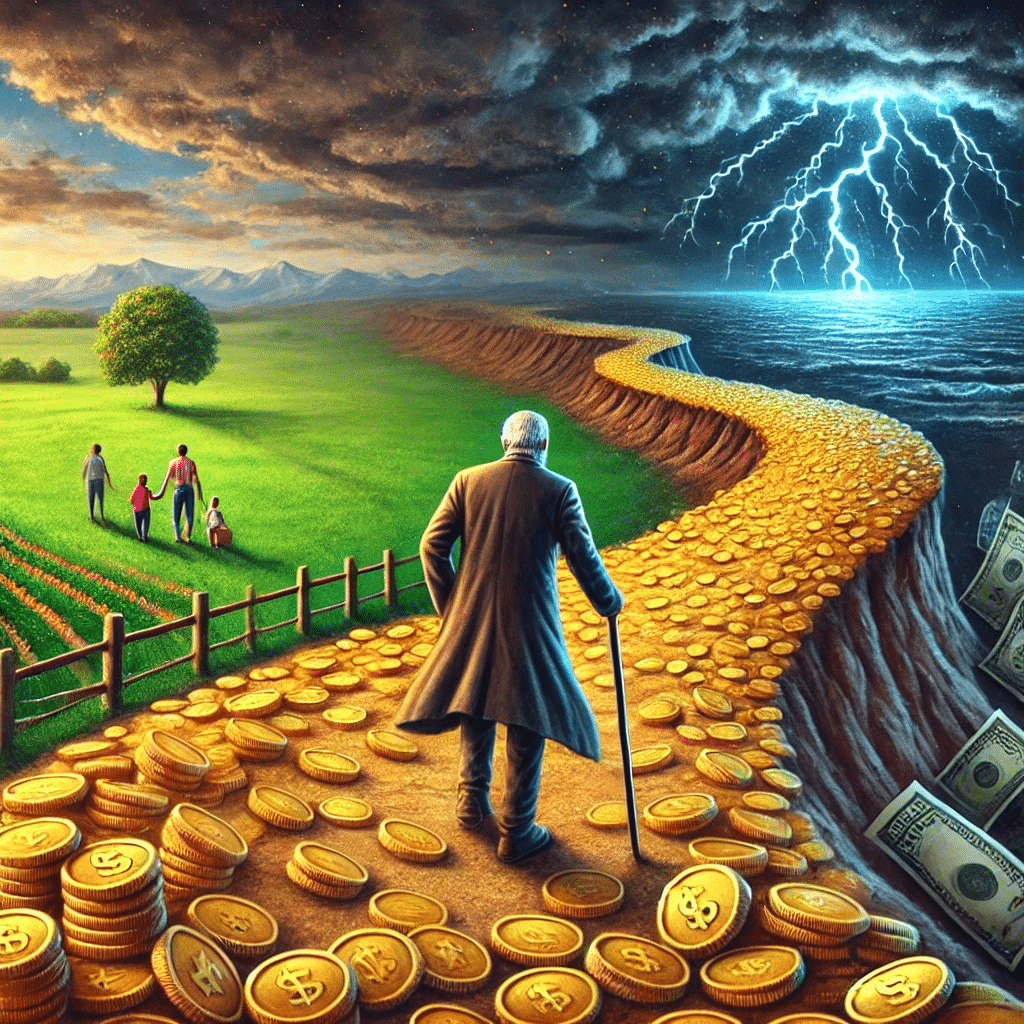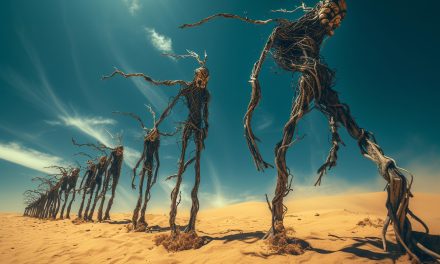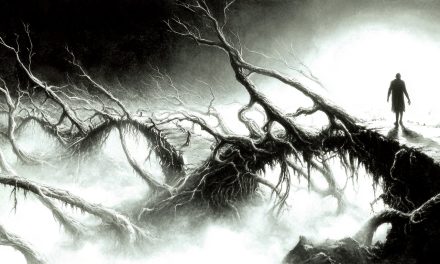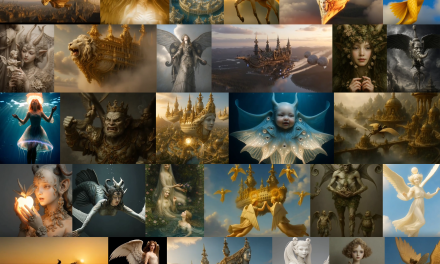Chasing Shadows: The Vanity of Wealth
This artwork depicts the life cycle of a man driven by the pursuit of wealth, from early ambition to his inevitable demise. The piece begins with the figure vigorously chasing after money, surrounded by symbols of success, power, and luxury. As the figure progresses through life, the material possessions grow, yet his world becomes increasingly desolate and cold, symbolizing the isolation and emptiness that accompany the relentless pursuit of riches.
In the final scene, the figure lies lifeless amidst his amassed wealth. At this moment, a hand appears on his dead body, not to offer comfort, but to claim the fortune he can no longer protect. The appearance of the hand highlights the ultimate futility of wealth—it cannot be held onto in death, and in the end, it becomes the object of desire for others, leaving the figure with nothing.

A figure races across a dry, cracked desert, chasing after dollar bills. In the distance, a glowing city represents material success, yet the barren landscape suggests the cost of this relentless pursuit, sacrificing life’s true richness for the illusion of wealth.

A person stands confidently in the heart of a glittering golden city, surrounded by towering skyscrapers made of shimmering gold. The figure clutches a large bag of money, a symbol of his financial success and prosperity.

A lone figure stands triumphantly atop a mountain of golden coins, gazing into a reflective frame where a shadowy version of himself stands. The dark sky and barren surroundings emphasize the emptiness that follows achieving financial success, revealing the vanity and isolation of this pursuit. However, he sees himself as a successful figure.

A figure stands on a massive pile of gold and money, surrounded by a river of quicksand that traps him in place. As the wealth grows around him, he remains unaware that the river has become a barrier, isolating him from the world. This again highlights how the pursuit of riches can lead to isolation, trapping him in the very fortune he sought.

He walks a path paved with gold coins, symbolizing a life spent in pursuit of wealth. As he journeys further, the distance between him and his family grows, with his loved ones now too far away on the green, peaceful side of the fence. He is truly alone, separated from those who once mattered most. The stormy skies ahead and the crumbling path behind him emphasize the frustration he now faces, having sacrificed meaningful connections in the relentless pursuit of money. His wealth, though abundant, has left him solitary and disconnected from what truly matters.

He lies lifeless in an extravagant bed, clutching a dollar bill even in death, surrounded by piles of gold coins and stacks of cash. The room is adorned with opulent decor, yet the atmosphere feels cold and somber. Despite having achieved immense wealth, he never let go of his pursuit, gripping the money as though it were an addiction that followed him to the grave. The sunlight streaming through the window highlights the tragic irony—he amassed great riches, but in the end, it brought him no comfort or peace, only a lonely and unfulfilled death.

In the final scene, the man still lies lifeless, surrounded by the riches he spent his life accumulating. At this moment, a hand reaches out, not to offer solace, but to take the fortune he can no longer protect. This emphasizes the ultimate futility of his pursuit; no matter how much wealth he gathered, it slips from his grasp in death, becoming the object of someone else’s desire. The scene captures the tragic irony that wealth, in the end, leaves him with nothing, as it is easily claimed by others.






























Comments